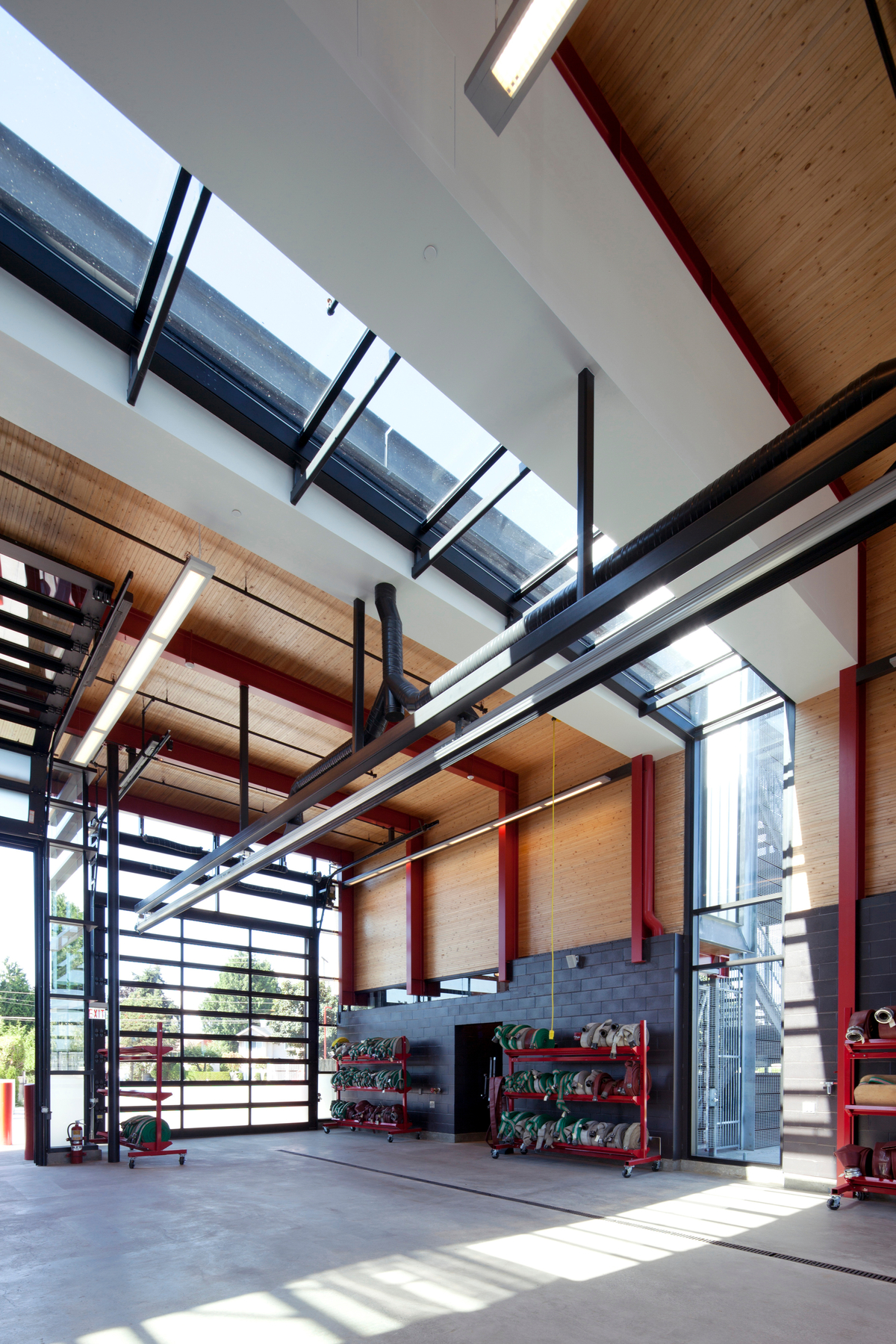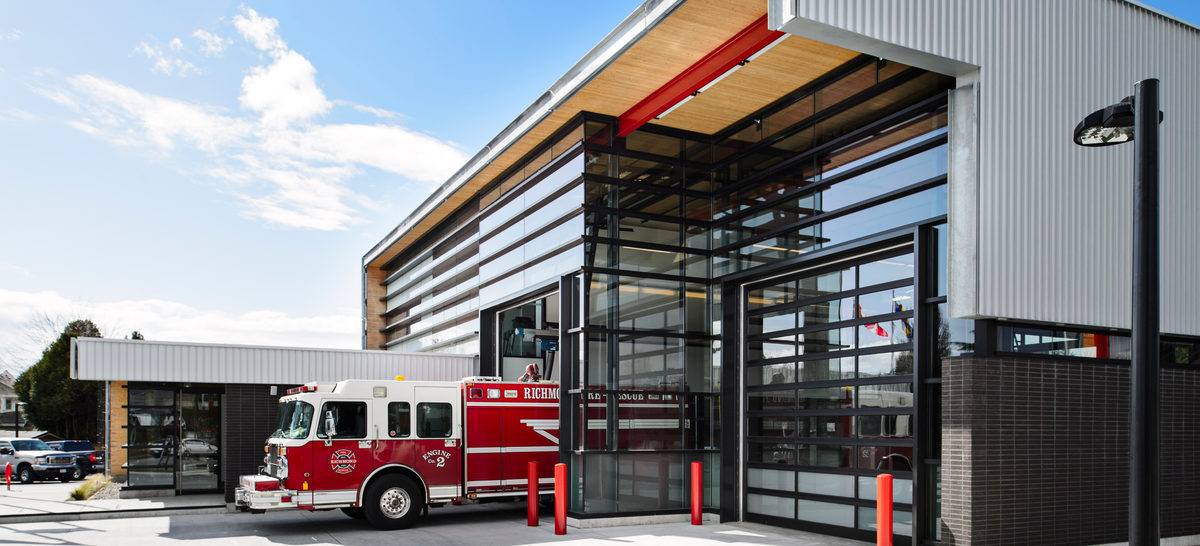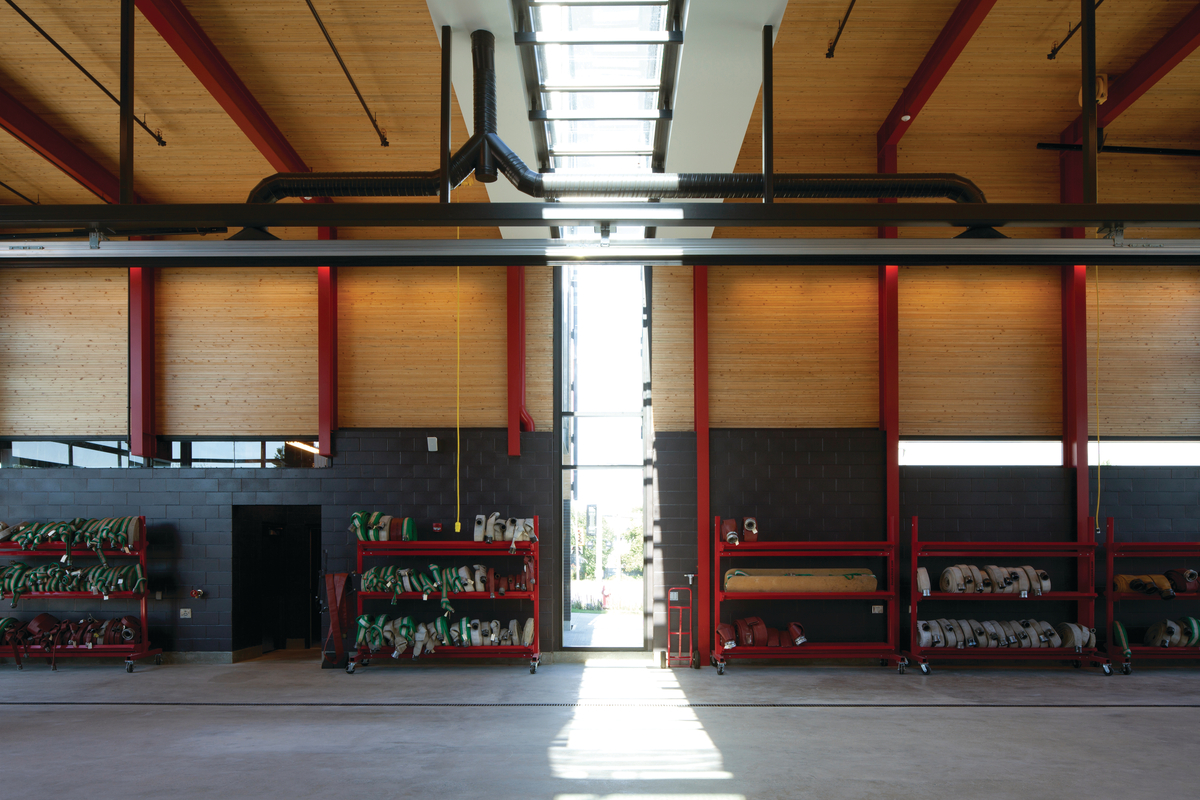Tough and resilient, wood is the perfect material for the City of Richmond’s fire hall. The building features a 12-metre-high hose-drying tower and two fire apparatus bays made from nail-laminated timber (NLT) sourced from sustainably managed BC forests.
- The building meets strict structural requirements for fire hall construction, and it also creates a comfortable work environment for staff with a blend of wood and metal composite exterior and extensive glazing.
- The solid-wood decking used for the roof and wall panels of the main fire hall are nail laminated timber (NLT), which was nailed in place at the job site; NLT panels were also used for the 12-metre-high hose-drying tower and two fire apparatus bays.
- NLT was left exposed to the building’s interior to provide a natural, warm aesthetic.
The Steveston Fire Hall’s transparent design engages the community by providing views of the equipment, and lets in plenty of daylight to create bright, warm spaces. As a replacement for the 40-year-old fire hall that served the Steveston community, the civic building was built with structural nail-laminated timber (NLT) panels formed using mountain pine beetle wood. The panels, which were nailed together on-site, were left exposed to the interior, creating an uncluttered, natural material palette.
The hall is a good example of Richmond’s commitment to promoting wood in construction for its low carbon footprint.
Wood is safe and resilient
There are strict structural requirements for fire hall construction. Sustainable building is playing an increasingly important role in Canada’s post-disaster design standards. Not only must buildings that house critically important emergency responders be structurally sound and able to remain operational in the event of a disaster, but they are often designed to echo the sustainability goals of the communities they serve.
Wood’s durability and recyclability contributed to the project’s LEED Gold designation. Nearly 25 percent of the materials in the project (including lumber for the NLT panels) were sourced locally and the recycled content of the materials in the project exceeded 10 percent (by value).
Wood’s natural insulating properties also helped contribute to the building’s sustainable design. The high-performance building envelope reduces heat loss in winter and heat gain in summer.
“Sustainability is one of Richmond Council’s term goals, so the City took extra steps to ensure Steveston Fire Hall was truly sustainable in design, construction and operation.”
Mayor Malcolm Brodie, City of Richmond


